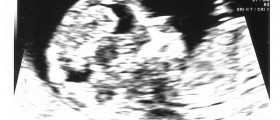Some women may experience passing blood clots during monthly bleeding. This particularly affects women with heavy periods although it may also occur in case of light or moderate periods. In some cases the presence of blood clots is not considered serious while in others they occur due to some severe underlying medical conditions.
Menstrual Blood Clots
During menstruation the inner lining of the uterus 'peels' and reveals open blood vessels. The bleeding originates from these blood vessels and since they gradually constrict bleeding eventually ceases. In some women bleeding is heavy and may be accompanied by blood clots. They look semisolid and resemble a gelatinous lumps. Blood clots contain red blood cells, white blood cells as well as platelets. They form due to the process of coagulation which is initiated by bleeding from uterus blood vessels.
What Causes Blood Clots during Periods?
Blood clots during periods are easily recognized because they occur in a form of clumps. Because they form as a consequence of a body's natural way to control bleeding , it is normal for such clumps to leave the uterus on the heaviest day of menstrual bleeding. It is also normal to pass blood clots after spending some time lying down or sleeping. During these periods the blood inside the uterus has partially coagulated and this is associated with clot formation. These blood clots are passed as soon as the woman gets up.
Apart from natural mechanisms of blood clotting, blood clots during menstrual periods may also occur due to hormonal imbalance. Quick uterine shedding and consequent formation of blood clots may be associated with fluctuation in the levels of estrogen and progesterone. This is characteristic for women suffering from polycystic ovary syndrome and perimenopausal women. It is also possible in women who have recently given birth. After childbirth it is normal for the uterus to contract in order to expel the placenta and stop bleeding.
And finally, blood clots during periods may be a consequence of endometriosis. This is a serious and quite painful medical condition characterized by the growth of endometrial tissue in other organs apart from the uterus.
It is essential to pay close attention to the very appearance of blood clots. Namely, normal blood clots are usually approximately the size of a quarter or even less. There are not many blood clots and they pass only occasionally. However, larger blood clots, blood clots that occur with mild bleeding and blood clots associated with sever pain, fertility issues and irregular periods should be a reason for worry and must be reported as soon as possible.

















Your thoughts on this
Loading...